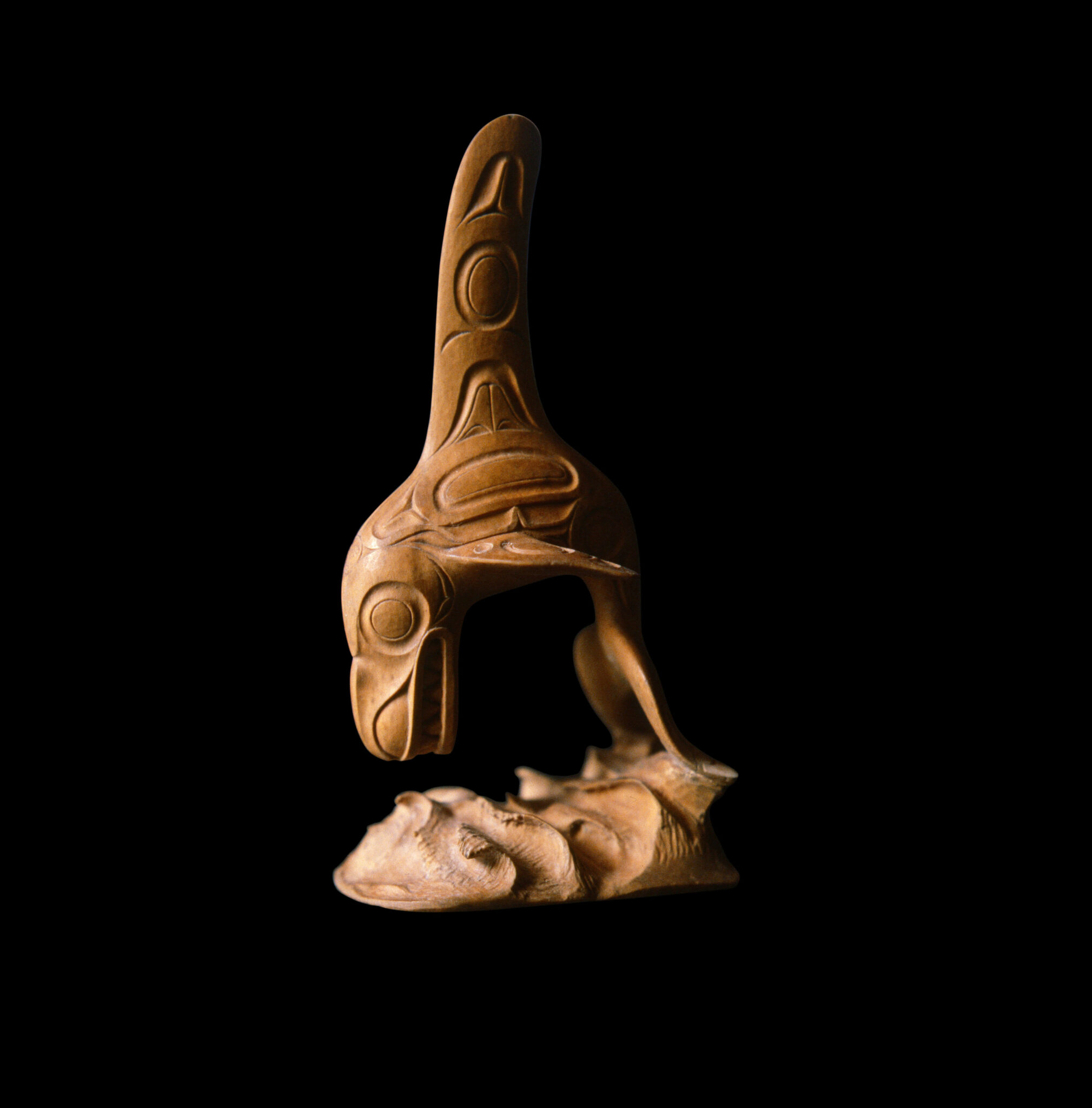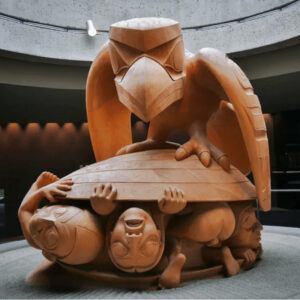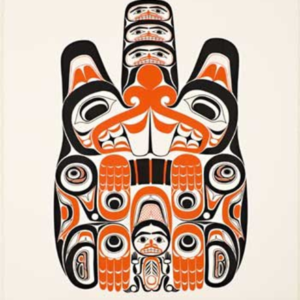Killer Whale 1982

Bill Reid, Killer Whale, 1982
Boxwood, 11.5 x 4.3 cm
SFU Bill Reid Collection, Vancouver
The Haida word for killer whale is skaana, or “spirit being,” because these animals are the primary visible form of the great spirit world beneath the sea. Bill Reid’s Killer Whale has its back arched, humpback-like, in preparation for a deep dive into the powerful waves. Carved in 1982, this diminutive hand-held boxwood sculpture became the inspiration for the monumental bronze Skaana—Killer Whale, Chief of the Undersea World, installed in 1984 outside the Vancouver Aquarium in Stanley Park. In this final rendition the whale is poised above the rather calm and mirror-like waters, awaiting a fierce re-entry.
-
Bill Reid and Jim Hart with the plaster model for Skaana—Killer Whale, Chief of the Undersea World (1984), c.1982–84, photograph by Tony Westman.
-
Plaster model and paper blueprints for Skaana—Killer Whale, Chief of the Undersea World (1984), c.1982–84, photograph by Tony Westman.
-
Studio assistant working on Skaana—Killer Whale, Chief of the Undersea World (1984), c.1982–84, photograph by Tony Westman.
-
Skaana—Killer Whale, Chief of the Undersea World, 1984, being assembled, c.1982–84, photograph by Tony Westman.
-
Skaana—Killer Whale, Chief of the Undersea World, 1984, being assembled, c.1982–84, photograph by Tony Westman.
-
Bill Reid, Chief of the Undersea World, 1984, plaster, 518.2 x 203.2 cm, Canadian Museum of History, Gatineau.
-
Unveiling ceremony for Skaana—Killer Whale, Chief of the Undersea World, 1984, at the Vancouver Aquarium, June 2, 1984, photograph by Tony Westman.
In making the shift from miniature to monumental, Reid continued to apply the strategies of a goldsmith. He advocated that the large cast bronze be finished with the same precise attention to the “deepening layers of linear relief” as in a piece of jewellery. In staying true to Haida understandings, Reid advocated that care must be taken with each minute and unseen part because, ultimately, the work is not only for human eyes—that one must remember the eyes of the supernaturals and the ancestors. As George Rammell (b.1952) phrases it, “the supernatural inhabitants of the ocean . . . are omnipresent across the realities of scale and location.” Reid believed that Daxhiigang (Charles Edenshaw, 1839–1920) was his posthumous guide, watching and judging the quality of his work. Only when Reid felt that he had “carved all of the compromise out of a project” could he proudly say, “Charlie would have wanted it that way.”
The Killer Whale appears time and again in Reid’s work, sometimes delicately dangling as a pair of earrings, at other times painted or drawn. In 1984 he depicted the Killer Whale in his illustration Nanasimgit and His Wife as part of his co-authored book of Haida myths titled The Raven Steals the Light. In the myth “Nanasimgit and His Wife,” Nanasimgit finds a wife among the “daughters of the others, who live inside the sea.” Throughout the story many transformations take place and characters inhabit different forms. For example, Nanasimgit’s wife comes to the village in the form of a cloud and transforms into a beautiful woman once the grandmother has invited her into the house. In the image, Reid depicts Nanasimgit and his wife riding on the back of the Killer Whale. Here and in other Haida myths the Killer Whale is a vehicle of both transformation and transition between the human and spirit worlds—a source of never-ending fascination for Reid.

 About the Author
About the Author
 More Online Art Books
More Online Art Books
 Acknowledgements
Acknowledgements